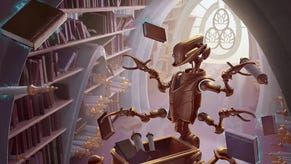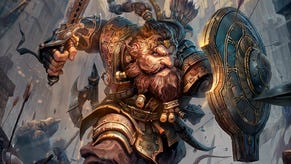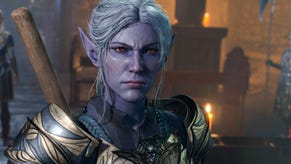Dungeons & Dragons’ alignments are a flawed but powerful tool for DMs, if they’re used well
Righteous.
If you’ve ever played Dungeons & Dragons, there’s a good chance that you’ve completely ignored the alignment system. Let’s face it: squishing the vast complexities of human morality into nine combinations of five different categories is reductive at best. At its worst, it can be used as a bludgeon by dictatorial DMs to control PC behaviour. “Your Lawful Good character told a lie? TEN THOUSAND YEARS DUNGEON!” And that’s without considering the questions raised by sorting entire sentient species into neat little good and evil boxes.
Wizards of the Coast has clearly been thinking along similar lines for some time. The fourth edition of the RPG slimmed down the alignment categories, and while D&D 5E brought back the full set it also decoupled alignment from most spells and abilities. Alignment is still there, but it has little mechanical significance.
While this is a move that I broadly approve of, I sincerely hope that the classic alignment system isn’t discarded entirely. Used well, D&D alignments are one of the most unique and compelling parts of a game that often struggles to establish any real identity of its own.
There’s no better starting point than Dungeons & Dragons’ Great Wheel cosmology. In the Outer Planes, Law, Chaos, Good, Evil and their various pairings aren’t just concepts, but places. Entire realms that are physical manifestations of these metaphysical forces. That’s the key feature which makes alignments so interesting. In the world of D&D, alignments don’t exist as mere concepts; they are real forces that have just as much sway on the multiverse as gravity or magnetism.
D&D alignments are one of the most unique and compelling parts of a game that often struggles to establish any real identity of its own.
This isn’t something that the game’s writers conjured out of thin air. Like much of D&D, it has a rich literary history, although not one as famous or immediately obvious as JRR Tolkien’s legacy of elves and orcs. The battle between Law and Chaos features in many of the British author Michael Moorcock’s work, particularly the Elric of Melniboné series. They’re a great source of inspiration and well worth perusing on their own merits. You’ll quickly start to see how much influence Moorcock has on all kinds of fantasy games.
A lot of D&D players view the Good/Evil axis of alignment as the primary one. It’s easy to see why. Heroes against villains is a classic match-up, and a mixed party of Lawful, Neutral and Chaotic characters who share a dedication to Good is a lot easier to reconcile than a mixed party of Good and Evil characters. Overturning this assumption and focusing on Law and Chaos immediately presents a very different framing.
Good triumphing over Evil is something most people would see as worth striving for, making the concept of balancing the two seem alien and antagonistic. Law and Chaos are much less subjective and it’s easy to see how neither stagnant, everlasting Law nor infinite, formless Chaos are appealing outcomes. The origins of devilkind in Tyrants of the Nine Hells tells of how certain forces of Law using extreme methods in their prosecution of the war against Chaos created the very concept of Evil in the first place.
Placing PCs in moral dilemmas is fantastic fuel for roleplaying.
If that all sounds incredibly appealing, I’d recommend heading straight to the classic second-edition Planescape setting. While long abandoned, most of the creatures and locations still exist in D&D 5E today, making it easy to adapt the wonderful material to a more modern incarnation of the rules.
Not everyone wants to go on grand Outer Planar adventures, but these questions of alignment can still play a large part in a more terrestrial campaign. Placing PCs in moral dilemmas is fantastic fuel for roleplaying, even before we consider the greater implications. Heroes doing small evils for the greater good and the foulest villains seeking redemption are staples of fiction for a reason.
Tolkien and Ursula Le Guin are great examples of fantasy authors who strongly emphasise that their heroes’ victories are the result of them choosing to do the right thing, when expediency or thoughts of personal gain tempt them to do otherwise. In a D&D campaign where every evil action, especially when performed by a champion of Good, empowers the forces of Evil, the consequences of the PCs’ misdeeds can be dire. (The Book of Exalted Deeds, another third-edition D&D sourcebook, covers these topics in detail. One of my favourite RPG books of all time, it’s well worth having a look at if you’re at all interested in the ideas I’ve presented in this article.)
Like any weighty topic, the exploration of morality is something you should only include in your game after careful thought and consideration. An axiom I fall back on is: “It should be a feature, not a bug.” The inclusion should be deliberate and given proper focus, not just chucked in there because it’s in the rules. Bearing that caveat in mind, delving into the implications of the alignment system can make for a great thread in your game, or even be the focus of a whole campaign.










